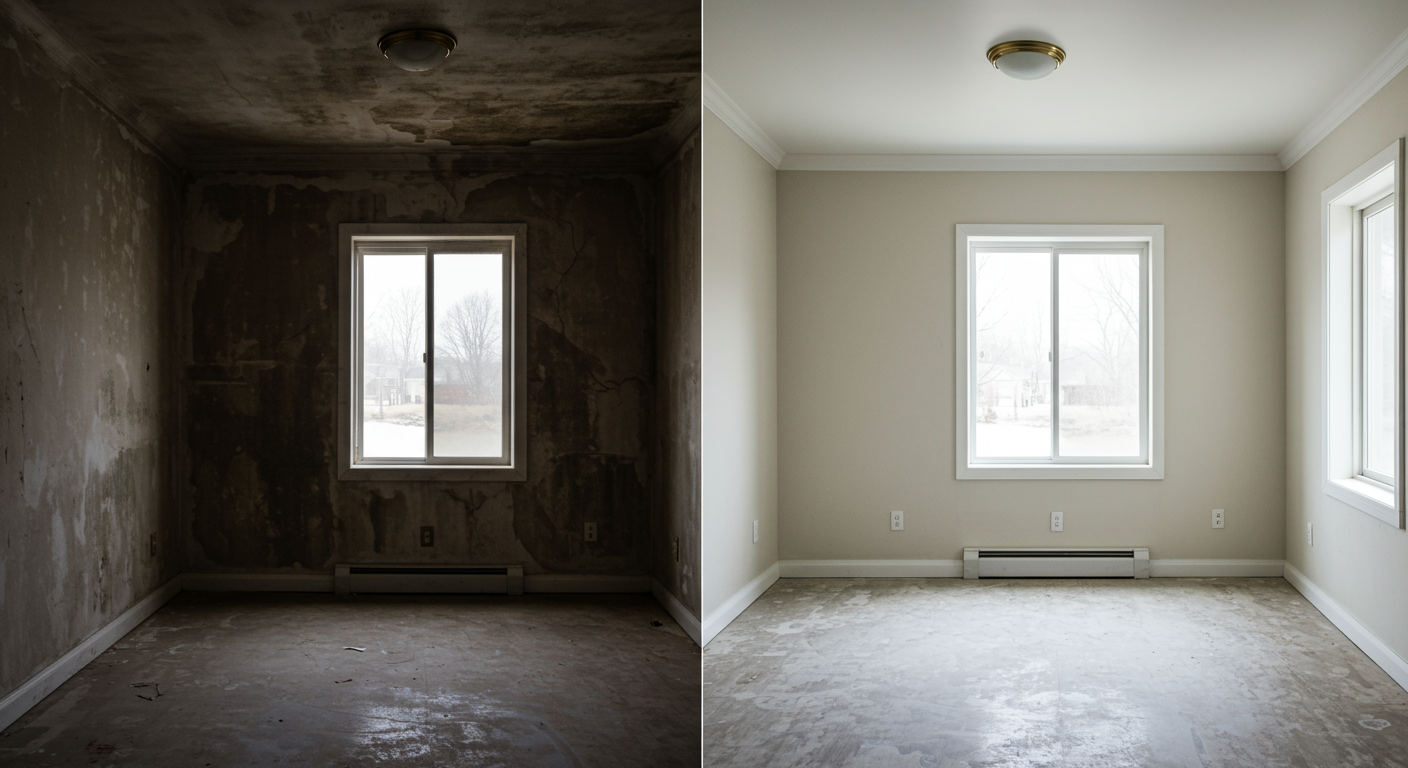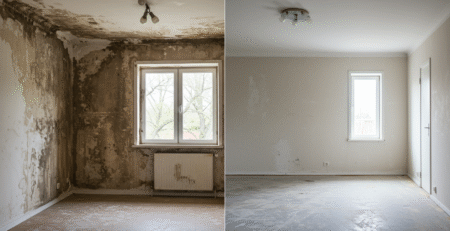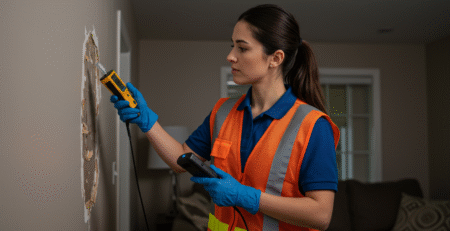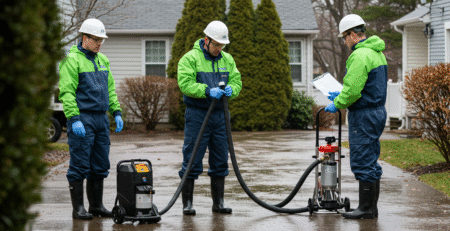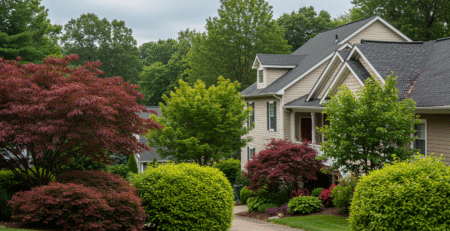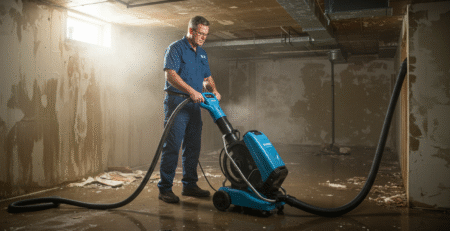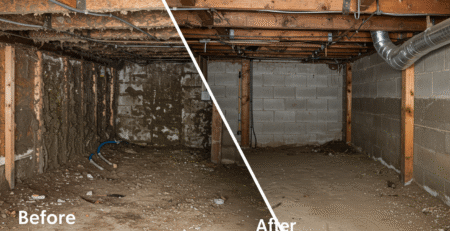Mold is more than just an unsightly problem—it poses significant health risks and can compromise the structural integrity of your home. If you’re in Newark, OH, understanding the mold mitigation process is essential to protect your property and ensure a safe living environment. This guide provides a detailed breakdown of the mold mitigation process, its importance, and how to prevent future mold growth.
Understanding Mold and Its Risks
What is Mold?
Mold is a type of fungus that thrives in damp, humid environments. It reproduces through tiny spores that travel through the air and settle on moist surfaces. While mold is a natural part of the environment, its presence indoors can lead to serious issues. Mold not only damages walls, ceilings, and floors but also poses health risks, especially for individuals with allergies, asthma, or weakened immune systems.
Common Types of Mold Found in Newark, OH
In Newark, OH, the most common types of mold include black mold (Stachybotrys), Aspergillus, and Cladosporium. Black mold is particularly concerning due to its potential to release mycotoxins, which can cause respiratory problems and other health issues. Aspergillus and Cladosporium are also prevalent and can trigger allergic reactions. Recognizing these types of mold is the first step in addressing the problem effectively.
The Mold Mitigation Process Explained
Step 1: Initial Inspection and Assessment
The mold mitigation process begins with a thorough inspection of your property. Professionals use specialized equipment, such as moisture meters and infrared cameras, to identify areas of mold growth and the underlying causes. This step is crucial for developing a tailored remediation plan that addresses both the visible mold and the hidden sources of moisture.
Step 2: Containment and Air Filtration
Once the mold-affected areas are identified, containment measures are put in place to prevent the spread of mold spores to unaffected areas. This involves sealing off the contaminated zones with plastic sheeting and using negative air pressure. High-efficiency particulate air (HEPA) filters are also employed to capture airborne spores and improve indoor air quality during the remediation process.
Step 3: Mold Removal and Remediation
The actual removal of mold involves cleaning and treating affected surfaces with antimicrobial solutions. In cases of severe contamination, porous materials like drywall and carpeting may need to be removed and replaced. Professionals ensure that all mold is eradicated and the area is thoroughly sanitized to prevent regrowth.
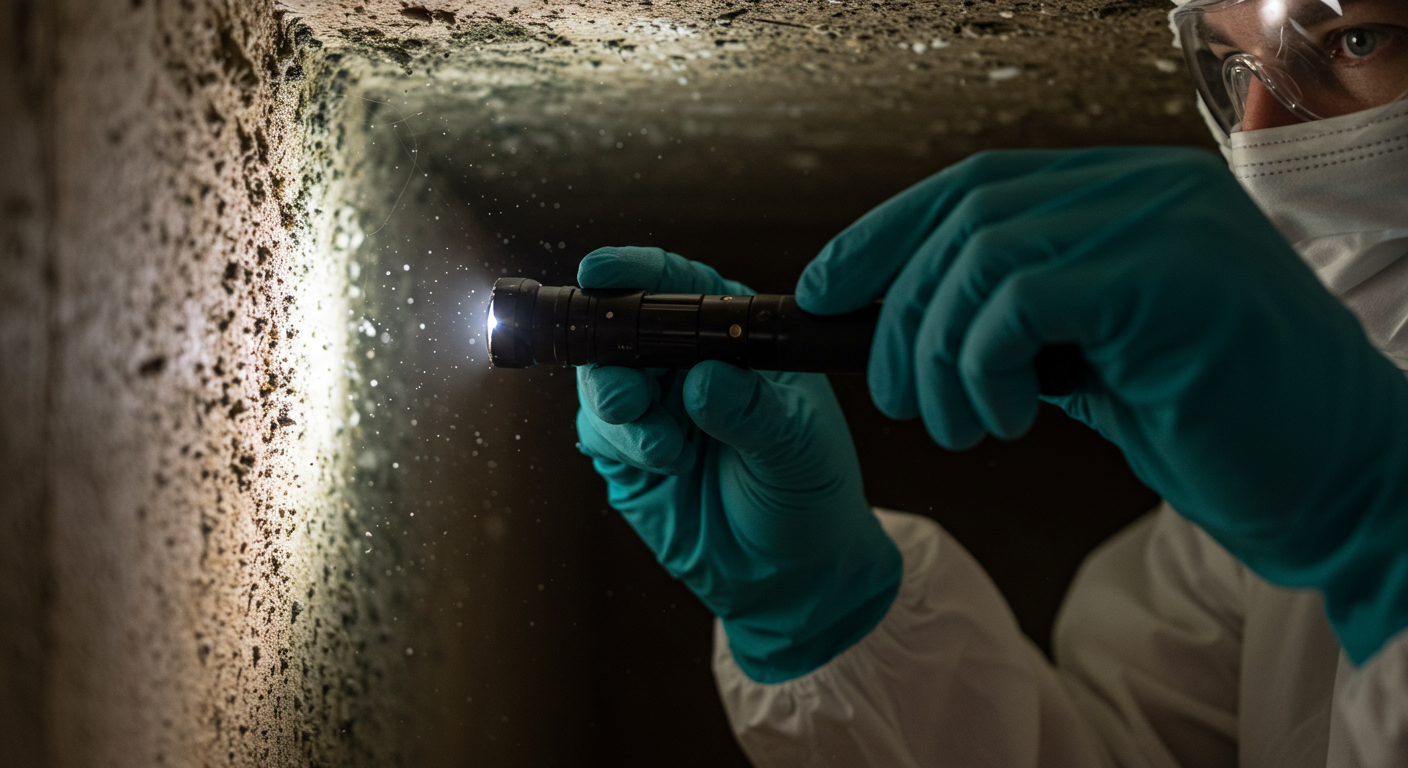
Why Choose Professional Mold Mitigation Services?
Benefits of Professional Expertise
Hiring professionals for mold mitigation ensures that the problem is addressed comprehensively and safely. Experts have the training, experience, and equipment needed to identify hidden mold, eliminate it effectively, and prevent future occurrences. They also adhere to industry standards and best practices, providing peace of mind to homeowners.
Importance of Compliance with EPA Guidelines
Professional mold mitigation services follow strict guidelines set by the Environmental Protection Agency (EPA). These guidelines ensure that the remediation process is conducted safely and effectively, minimizing health risks and environmental impact. Compliance with these standards is particularly important for maintaining the safety of your home and family.
For more insights on safe mold removal practices, check out this comprehensive guide to mold and fungus issues in Cleveland, OH.
Preventing Future Mold Growth
Tips for Mold Prevention in Your Home
Preventing mold growth requires proactive measures to control moisture levels in your home. Here are some practical tips:
- Fix leaks in roofs, walls, and plumbing promptly.
- Ensure proper ventilation in areas prone to moisture, such as bathrooms and kitchens.
- Use dehumidifiers to maintain indoor humidity levels below 50%.
- Clean and dry areas affected by water damage within 24-48 hours.
By implementing these measures, you can significantly reduce the risk of mold growth and protect your home from potential damage.
Importance of Regular Inspections
Regular inspections by mold remediation professionals can help identify potential issues before they escalate. These inspections are particularly important in Newark, OH, where the humid climate creates ideal conditions for mold growth. Scheduling periodic assessments ensures that your home remains mold-free and safe for your family.
For additional resources on water damage restoration, visit this guide on emergency water damage repair in Westerville, OH.
Conclusion
Mold mitigation is a critical process for maintaining a healthy and safe living environment. By understanding the risks of mold, the steps involved in remediation, and the importance of prevention, homeowners in Newark, OH, can take proactive measures to protect their properties. Whether you’re dealing with a minor mold issue or a severe infestation, professional mold mitigation services provide the expertise and assurance needed for effective remediation.
Don’t let mold compromise your home’s safety and your family’s health. Act today to address mold issues and prevent future problems. For expert assistance, explore the best way to remove black mold from walls and ensure a mold-free home.

